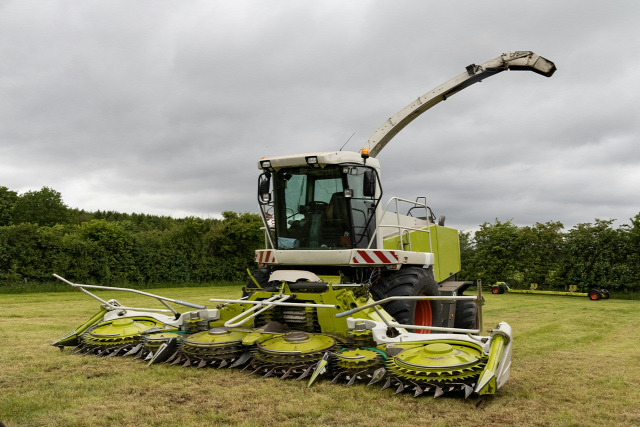
The agriculture sector, the backbone of global food security, is undergoing a seismic shift. With a growing population, shrinking arable land, and mounting pressure to meet sustainability goals, farmers and agribusinesses are turning to powered agriculture equipment to revolutionize productivity.
According to BIS Research, the global powered agriculture market was valued at $57.39 billion in 2021, which is expected to grow with a CAGR of 5.02% and the projected valuation will be crossing $73.32 billion by 2030 during the forecast period of 2021-2026. This article unpacks the trends, technologies, and strategies propelling this growth and how industries are leveraging them to stay ahead.
Market Overview
Powered Agriculture Equipment encompasses machinery like tractors, harvesters, irrigation systems, and planters, powered by internal combustion engines (ICE), electricity, or hybrid systems. These tools are critical for modern farming, enabling precision, efficiency, and scalability. Key segments include:
-
By Product Type: Tractors, Harvesters, Irrigation Systems, Sprayers, Planters.
-
By Power Source: ICE, Electric, Hybrid.
-
By Region: North America, Europe, Asia-Pacific, Latin America, Middle East & Africa.
Projected Growth:
-
Tractors: Largest segment, expected to grow at 5.02% CAGR due to demand for autonomous and electric models.
-
Electric Equipment: Fastest-growing category, driven by sustainability mandates.
-
Asia-Pacific: Dominates market share, fueled by government subsidies and labor shortages.
Top 3 Trends Reshaping the Market
1. Automation & AI: The Rise of Smart Farming
Powered equipment is evolving into intelligent systems equipped with AI, IoT, and machine learning.
-
Autonomous Tractors: Companies like John Deere and CNH Industrial are deploying self-driving tractors that optimize routes, reduce fuel use, and operate 24/7.
-
AI-Powered Harvesters: Startups like Agrobot use computer vision to identify ripe crops, minimizing waste.
-
Drone Technology: Drones monitor crop health, spray pesticides, and map fields, boosting yields.
Industry Impact:
-
AgTech Startups: Innovators like FarmWise and Blue River Tech attract billions of dollars in venture capital annually.
-
Data Analytics Firms: Microsoft’s Azure FarmBeats and IBM’s Watson analyze farm data to predict yields and risks.
Request an updated version of the research report on the global powered agriculture equipment market
2. Electrification & Sustainability: Greening the Fields
The shift to electric and hybrid-powered machinery is accelerating, driven by net-zero commitments.
-
Electric Tractors: AGCO’s Fendt e100 Vario reduces emissions by 30% compared to diesel models.
-
Solar-Powered Irrigation: Companies like Jain Irrigation deploy solar pumps, cutting energy costs by 48%.
-
Government Incentives: The EU’s Green Deal and U.S. Inflation Reduction Act offer subsidies for clean tech adoption.
Industry Impact:
-
Renewable Energy Firms: Siemens and Tesla partner with equipment makers to integrate battery tech.
-
Carbon Credit Platforms: Farmers earn revenue by selling carbon offsets generated through electric machinery.
3. Precision Agriculture: Data-Driven Decision Making
Precision agriculture uses sensors, GPS, and IoT to optimize inputs like water, fertilizers, and seeds.
-
Variable Rate Technology (VRT): Deere’s ExactApply adjusts sprayer output in real time, reducing chemical use by a huge marginal percentage.
-
Soil Health Monitoring: Startups like Teralytic offer wireless sensors that analyze soil nutrients, improving crop resilience.
Industry Impact:
-
Seed & Chemical Giants: Bayer and Syngenta use precision data to tailor crop solutions.
-
Telecom Providers: 5G networks enable real-time data transfer in remote farms.
Market Segmentation & Regional Insights
By Product Type:
-
Tractors: Demand for autonomous models drives 5.02% CAGR.
-
Harvesters: AI integration propels growth to cross $73.32 billion by 2030.
-
Irrigation Systems: Solar-powered systems.
By Power Source:
-
ICE (Dominant but declining): 47% share in 2023, shrinking due to emissions regulations.
-
Electric: Set to capture 75% market share by 2030, led by North America and Europe.
By Region:
-
North America: Tech innovation and corporate sustainability goals.
-
Asia-Pacific: India and China account for 56% of regional growth.
-
Africa: Emerging hotspot with 26% growth in equipment leasing.
Challenges & Opportunities
Barriers: High costs, lack of technical skills, and fragmented supply chains.
Solutions:
-
Training Programs: AGCO’s Future Farm initiative trains 10,000 farmers annually.
-
Modular Designs: Startups like Monarch Tractor offer scalable, DIY-friendly equipment.
Get more insights on the Agriculture Market Research Reports.
Future Market Outlook
By 2030, 88% of farms globally will use some form of powered equipment. Key innovations to watch:
-
Hydrogen-Powered Tractors: New Holland’s NH² prototype tests zero-emission hydrogen fuel.
-
Blockchain for Supply Chains: IBM’s Food Trust ensures ethical machinery sourcing.
Conclusion
The powered agriculture equipment industry is not just growing—it’s transforming how we feed the world. From AI-driven tractors to solar harvesters, industries that embrace these trends will cross $73.32 billion in opportunities by 2030. For farmers, manufacturers, and policymakers, the message is clear: innovate or risk being left behind.
